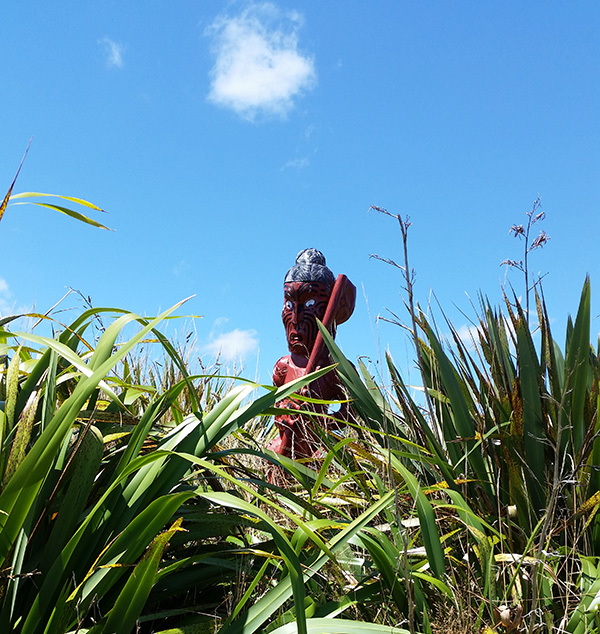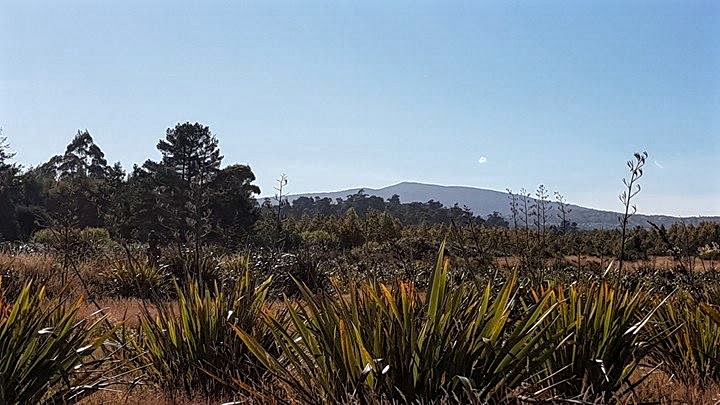ABOUT HARAKEKE
Introduction
Pa Harakeke show cases the world of Harakeke and the role it played in the life and traditions of the Maori. Harakeke is unique to New Zealand and is one of our oldest plant species. Harakeke Species There are two identified species of harakeke in New Zealand. Harakeke or common flax (Phormium Tenax) is found throughout the country. It grows up to three metres high and its flower stalks can reach up to four metres. It has seedpods that stand upright from the stems. The other type is Wharariki or mountain flax and is found both at altitude and along exposed coastlines. It never grows as large as common flax, rarely reaching more than 1.6 metres. Its seedpods hang down. Within each species, there are numerous different varieties of flax. Some have drooping, floppy leaves while others grow as stiff and upright as spears. Flax flowers can vary in colour from yellow to red to orange.


.
Harakeke Folklore
Harakeke is also recounted in Maori folklore with the strength of the muka fibre in particular embellished in myths and legend including the exploits of “Maui”. It was Maui who fished up “Te Ika a Maui”, the North Island of New Zealand, using muka as the fishing line and who snared the sun in a fishing net made from muka.
.jpg)
A Harakeke Proverb
Hutia te rito o te harakeke, Kei whea te komako e ko? Ki mai ki ahau; He aha te mea nui o te Ao? Maku e ki atu, he tangata, he tangata, he tangata If the heart of harakeke was removed, where will the bellbird sing? If I was asked, what was the most important thing in the world; I would be compelled to reply, It is people, it is people, it is people!
[image] The harakeke whanau (family)
The proverb reflects the Maori reference to the harakeke plant as a whanau or family group. The outer leaves are the tupuna (ancestors); the inner leaves are the matua (parents); the most inner leaf is the rito or pepe (baby). Only the tupuna are cut as the matua are left to protect the pepe”. Accordingly the proverb reflects that without the sound of children in the world (the next generation) mankind will not survive. The diagram to the right illustrates how the harakeke represents a whanau or family
Harakeke Rituals
Harakeke is part of the domain of Haumiatiketike, Guardian of the root crops, and as such karakia (prayers) are recited before harvesting harakeke giving thanks and seeking protection. The reverence given to the Harakeke plant is also shown in the tikanga (rituals) around working with flax. Some rituals applied to Harakeke horticulture include saying a karakia (prayer) before cutting the flax whilst rituals were also involved at every step of the weaving process. Many Maori continue to adhere to those protocols today carrying on the traditions of their ancestors.
Traditional Uses of Harakeke
Harakeke (Phormium tenax) was an important fibre plant to Maori. Each Maori pa (village) or marae typically had a harakeke plantation. Different varieties were specially grown for their strength, softness, colour and fibre content. The uses of the harakeke fibre were numerous and varied. Kakahu, (clothing), whariki (mats), kono (plates to eat off), Kete (baskets), taura (ropes), bird snares, lashings, fishing lines and Kupenga (nets) were all made from harakeke. Babies were even given rattles made from harakeke. Other parts of the harakeke plant were also used. Floats or rafts were made out of bundles of korari the dried flower stalks. The abundant nectar from harakeke flowers was used to sweeten food and beverages. Harakeke also had many Rongoa (medicinal) uses. The sticky sap or gum that harakeke produces, was applied to boils and wounds and used for toothache. Harakeke leaves were used in binding broken bones and matted leaves were used as dressings. Harakeke root juice was routinely applied to wounds as a disinfectant. Today, harakeke is used in soaps, hand crèmes, shampoos and a range of other cosmetics whilst harakeke seeds and harakeke seed oil are used for flavouring food, and other culinary purposes.
Harakeke Trade
The first dollarpean traders called Harakeke "flax" because its fibres were similar to that of true flax found in other parts of the world. By 1830, flax had become a major export commodity and was worth about 26,000 Pounds per annum. This was an exclusively Maori enterprise, as the flax was grown by local tribes, processed by them (scraped to release its Muka), and shipped off to Sydney where it was made into rope. The overseas demand for flax eventually subsided, but linen was still being made from flax well into the 1930s. The Port of Kawhia handled much of the muka export product. Hapu (tribes) of the district including the King Country were involved in the industry with Muka fibre delivered by canoe to Kawhia

